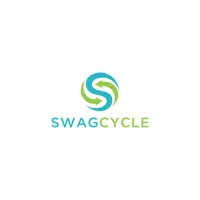Clothing and product donations are becoming increasingly popular as a way for brands to give back to their local communities. Not only do these donations help those in need, but they can also improve the public image of a brand by demonstrating its commitment to giving back. But why is donating old clothes & products important for brands? Let\'s take a look.
Benefits of Donating Old Clothes & Products
There are numerous benefits that come from donating old clothes & products.
- For one, it helps support local charities and other organizations by providing them with much-needed resources. Additionally, the items donated can often be used as educational or training materials, particularly in the clothing industry allowing people to learn more about how clothing is made and designed. This can be particularly helpful when teaching younger generations about sustainable fashion practices.
- Another benefit of donating old clothes & products is that it allows brands to generate positive publicity for their company. After all, when a company donates its excess inventory or unused items, it shows that the business cares about its community and is willing to invest time and money into making sure those in need are provided with what they need. Furthermore, this kind of charitable activity can even lead to increased sales and customer loyalty as people appreciate businesses that put their profits towards good causes.
- Finally, donating old clothes & products also reduces waste in landfills which helps protect our environment from further harm. When companies donate their old items instead of throwing them away, it ensures that these items will not end up taking up space in our landfills or creating additional pollution in our atmosphere due to the manufacturing process associated with creating new items from scratch.
How to Make Sure Your Donated Goods Reach Those In Need?
Donating clothes, products, and other items can be an incredibly meaningful way to give back to the community. However, when donating goods, it is important that those donations reach those in need and are not wasted in the process. Here’s a look at how you can make sure your donated goods are used best.
- Choose Your Donation Center Carefully
When donating old clothes or other items, it is important to do your research first. Take the time to check out various donation centers and see which ones have a good track record for making sure donations go where they should. Check online reviews and read up on any reputable organizations that may be accepting donations in your area. Knowing exactly who will receive your donations will help ensure that they are put to good use. - Ensure Quality
When donating clothes or products, it is important to make sure they are of decent quality. It is best to donate items that you would feel comfortable giving directly to someone in need rather than something you would throw away yourself. If you wouldn’t use it yourself, there’s a good chance somebody else won’t either. This doesn’t mean that all donated items need to be brand new or top-of-the-line; simply make sure the item is usable and clean before the donation is enough. - Choose A Specific Cause To Support
If possible, try donating directly to a specific cause or organization rather than a general donation center or charity shop. This way, you will know exactly where your donations are going and who will benefit from them. Doing this also allows you to focus on causes that matter most to you personally, such as animal welfare organizations or food banks in your local community.
Conclusion:
Donating old clothes & products can have a big impact on both people and the planet alike. Not only does it provide much-needed resources for those who are less fortunate, but it also helps reduce waste while generating positive publicity for the brand donating the items. Therefore, if you\'re looking for ways to give back this year, consider donating your excess inventory or unused items so that others may benefit from your generosity.


